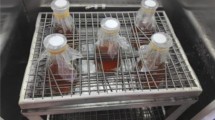Abstract
Approximately 110 pull-out tests were conducted on grouted anchors cast in the laboratory to investigate the effects of the rheological and mechanical properties of cement grouts, the initial free drop distance of grout, as well as the age of testing on the behavior of anchorages cast in dry and submerged conditions. The anchors consisted of 19-mm, conventional steel bars with an embedment length fixed at five times the bar diameter. Two different casting procedures corresponding to initial free drop of the grout in water of 20 and 200 mm were investigated. The cement grouts used in this investigation incorporated either a Type 10 or a blended silica fume cement and a fixed water-binder ratio of 0.40. The grouts incorporated various concentrations of a high-range water reducer, a rheology-modifying admixture, and silica fume. The rheology-modifying admixture and high-range water reducer were jointly incorporated to enhance both fluidity and washout resistance.
The test results indicate that properly designed grouts can be easily cast into place, and yet be cohesive enough to resist the washout of cementitious materials. The spread in load-carrying capacity between anchor bars cast in dry versus submerged conditions can decrease when cement grouts having a greater washout resistance level are used which can be secured by incorporating a rheology-modifying admixture and silica fume. The bond strength is shown to increase when incorporating silica fume regardless of the casting condition.
Résumé
Des essais d’arrachement ont été réalisés en laboratoire afin d’étudier l’effet des propriétés rhéologiques et mécaniques des coulis de scellement, de la longueur de scellement, de la procédure de mise en place ainsi que de la période de mûrissement sur le comportement des ancrages installés sous l’eau et en dehors de l’eau. Des barres d’armature de 19 mm de diamètre sont utilisées comme tirants d’ancrage. La longueur de scellement est fixée à une longueur égale à cinq fois le diamètre du tirant. Les coulis de scellement ont été mis en place en utilisant deux hauteurs de chute du coulis dans l’eau de 20 et de 200 mm.
Les coulis de scellement ont été formulés en utilisant un ciment Type 10 et un ciment contenant de la fumée de silice et un rapport eau/liant de 0,40. Les coulis utilisés contiennent différents ajouts. En particulier, le superplastifiant et l’agent colloïdal sont utilisés pour améliorer la fluidité et la résistance au lessivage des coulis.
Cette étude a montré en particulier que l’utilisation des coulis de ciment ayant une bonne résistance au lessivage permet d’obtenir une bonne résistance à l’arrachement des ancrages mis en place sous l’eau. Une bonne résistance au lessivage est assurée par l’utilisation de l’agent colloïdal et de la fumée de silice.
Similar content being viewed by others
References
McDonald, J.E., ‘Evaluation of Vinyl Ester Resin for Anchor Embedment in Concrete’, Technical Report REMR-CS-20 (U.S. Army Corps of Engineering, Washington, 1989) 53 p.
McDonald, J.E., ‘Anchor Embedment in Hardened Concrete under Submerted Conditions’, Technical Report REMR-CS-20 (U.S. Army Corps of Engineering, Washington, 1990) 42 p.
Best, J.F. and McDonald, J.E., ‘Evaluation of Polyester Resin, Epoxy, and Cement Grouts for Embedding Reinforcing Steel Bars in Hardened Concrete’, Technical Report REMR-CS-23 (U.S. Army Corps of Engineering, Washington, 1990) 69 p.
Ballivy, G., Benmokrane, B. and Aitcin, P.-C., ‘Field study on the uplift capacity of cement grouted rock anchors’ (In French),Canadian Geothechnical Journal 23(24) (1986) 481–489.
Benmokrane, B., Chennouf, A. and Mitri, H.S., ‘Laboratory evaluation of cement grouts and grouted anchors’,International Journal of Rock Mechanics, and Min. Sci. & Geomech. Abst. 32 (7) (1995) 633–642.
Khayat, K.H. and Yahia, A., ‘Effect of Welan Gum-High-range water reducer combination on rheology of cement groups’,ACI Materials Journal 94 (5) (1997) 365–372.
Khayat, K.H. and Yahia, A., ‘Correlations between rheological parameters, consistency, and washout resistance of structural cement grouts’,ASTM Journal, (in press), 23 pp.
Author information
Authors and Affiliations
Additional information
Editorial note A. Yahia, K. H. Khayat and B. Benmokrane work at the Department of Civil Engineering, Université de Sherbrooke, Quebec, Canada, which is a member of the Centre de Recherche Interuniversitaire sur le Béton (CRIB), a RILEM Titular Member. Prof. Khayat is a member of TCs 145-WSM (Workability of Special Concrete Mixes) and SCC (Self Compacting Concrete).
Rights and permissions
About this article
Cite this article
Yahia, A., Khayat, K.H. & Benmokrane, B. Evaluation of cement grouts for embedding anchors under water. Mat. Struct. 31, 267–274 (1998). https://doi.org/10.1007/BF02480425
Received:
Accepted:
Issue Date:
DOI: https://doi.org/10.1007/BF02480425



